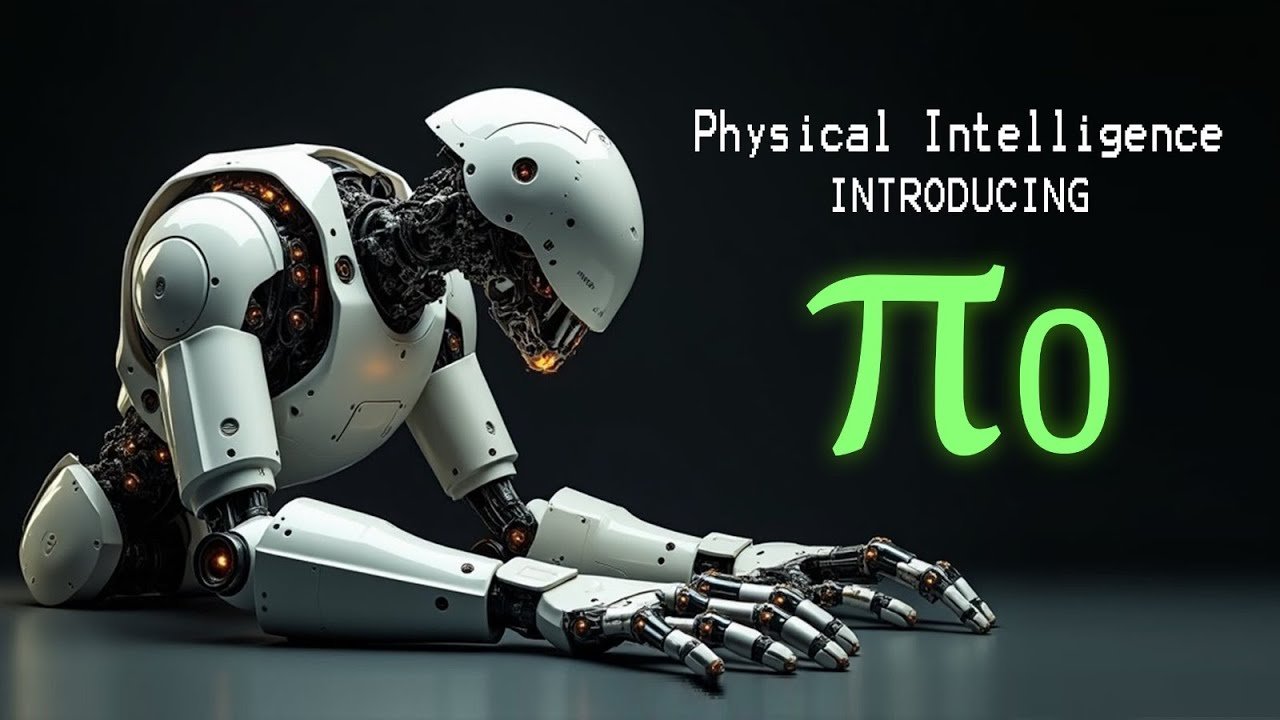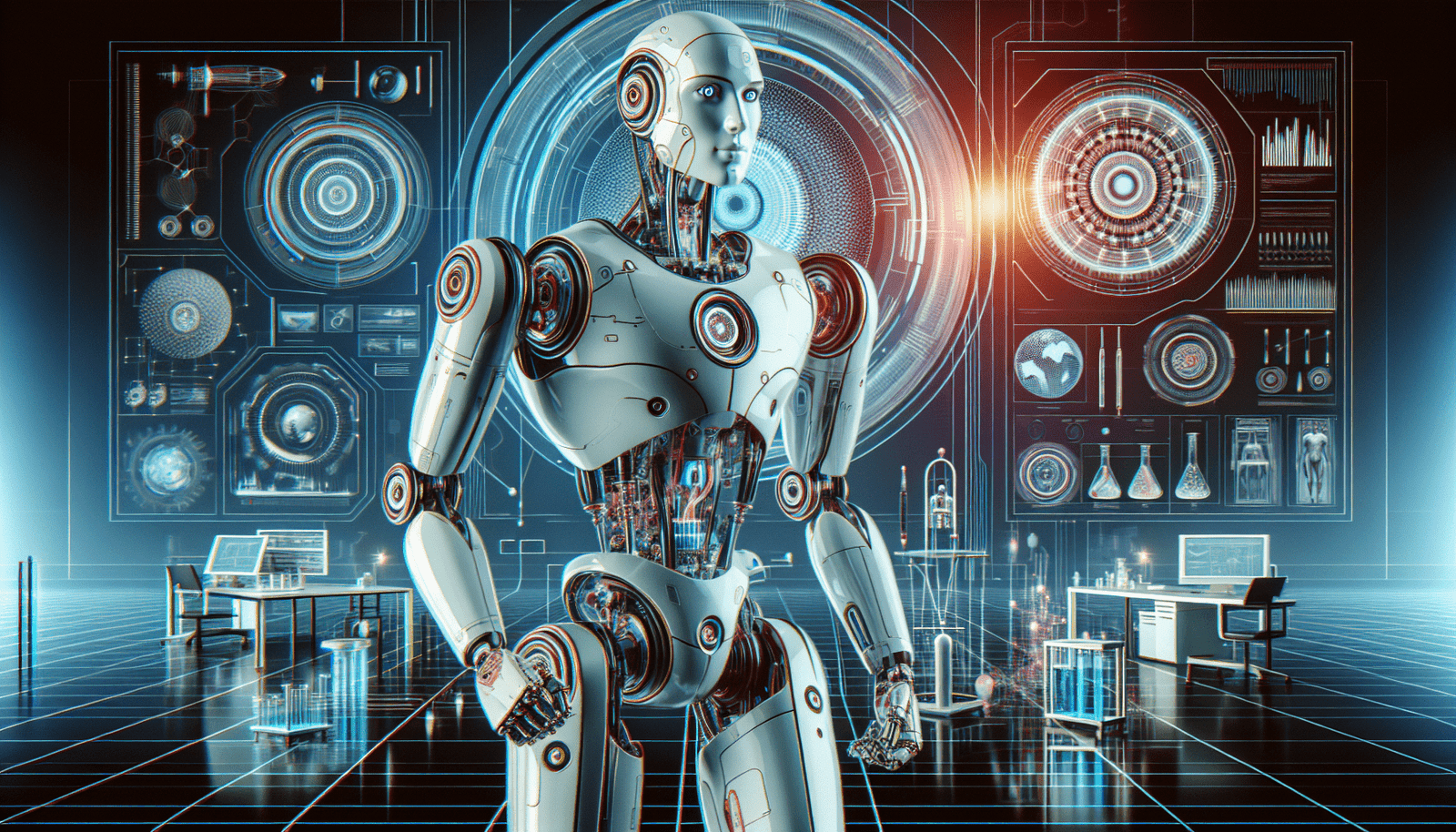The unprecedented development achieved by Physical Intelligence marks a pivotal moment in robotics, thanks to the revolutionary π0 model. This innovative AI allows robots to seamlessly perform complex household tasks, integrating vision, language, and motor skills, thus heralding a significant step closer to achieving Artificial General Intelligence (AGI). With substantial backing from tech luminaries such as Jeff Bezos and OpenAI, and a remarkable $400 million in funding supporting the initiative, Physical Intelligence has established itself as a frontrunner in transforming how robots can autonomously assist in both domestic and industrial settings.
The versatility of the π0 model lies in its ability to perform intricate and diverse activities, exemplifying a leap from traditional single-task robots to a new era of adaptive robotic technology. Unlike its predecessors, this AI model is designed to learn and adapt to various environments, making robots capable of undertaking tasks with human-like precision and fluidity without extensive reprogramming. While the potential of this technology is immense, challenges such as job displacement, privacy concerns, and making this advanced AI accessible and affordable remain significant hurdles. Nevertheless, Physical Intelligence’s vision to draw parallels with the adaptability of language models such as ChatGPT signifies a groundbreaking shift in the robotics landscape.
Revolutionizing Robotics with General AI
In the rapidly evolving world of technology, General Artificial Intelligence (AGI) stands out as one of the most ambitious and transformative goals. AGI aims to create systems that can understand, learn, and apply intelligence in a wide range of tasks, much like a human. Physical Intelligence, a San Francisco-based startup, has made significant strides toward this vision with their innovative π0 model. This groundbreaking model is paving the way for robots capable of performing complex tasks with adaptability and precision, signifying a major leap toward the realization of AGI.
Introduction to Physical Intelligence’s π0 Model
Physical Intelligence’s π0 model represents a significant advancement in the development of robotic systems that can perform complex household tasks. Unlike traditional robots which are typically designed for performing single, specific tasks, the π0 model is engineered with a focus on general-purpose functionality. This model embodies a sophisticated integration of vision, language, and motor skills, enabling robots to navigate and interact with their environment in a manner that closely mimics human capability. By processing and understanding complex visual, verbal, and motor inputs, the π0 model demonstrably handles a variety of household chores such as folding laundry and packing groceries with unprecedented ease.
Significance in Advancing Towards AGI
The introduction of the π0 model is a crucial step toward achieving AGI in robotics. AGI promises to transcend the limitations of narrow AI, which is confined to specific tasks. The π0 model’s ability to perform a wide array of tasks without the need for extensive reprogramming epitomizes the core ideals of AGI. This technology is significant not only because it heralds the future of autonomous systems that can learn from and adapt to diverse environments but also due to its potential impact on industries beyond domestic applications.
Capabilities of the π0 Model
Performing Complex Household Tasks
The π0 model’s ability to perform complex household tasks marks a substantial milestone in robotic AI. Traditional robots often struggle with tasks that require precision, such as folding clothes or handling delicate items like eggs. However, Physical Intelligence’s model can navigate these challenges seamlessly. This capability stems from its advanced sensory processing, which allows the robot to dynamically adjust its approach based on the specific requirements of each task. For instance, when tasked with packing groceries, the robot can efficiently determine the optimal arrangement for different items to prevent damage during transportation.
Adaptability and Human-like Precision
A key highlight of the π0 model is its adaptability, which allows it to operate with human-like precision in varied settings. Unlike conventional robots that follow rigid programming, the π0 model utilizes its comprehensive sensory processing to adapt to new environments and tasks. This adaptability is achieved through a sophisticated system that processes visual, linguistic, and tactile inputs to refine its actions in real-time. As a result, the robot can perform tasks traditionally considered too complex for machines, such as meticulously handling delicate objects and adjusting its grip and force applications as required.

This image is property of i.ytimg.com.
Technological Aspects of the π0 Model
Integration of Vision, Language, and Motor Skills
The technical foundation of the π0 model resides in its seamless integration of vision, language, and motor skills. These three fundamental components enable the model to perceive its environment, understand verbal instructions, and execute appropriate physical actions. Vision technology allows the robot to accurately assess its surroundings, while its language processing capabilities facilitate understanding contextual instructions. Thus, coupled with advanced motor skills, the π0 model can perform tasks with astounding precision and efficiency.
Pre-training on Diverse Robotic Actions
Prior to deployment, the π0 model undergoes extensive pre-training on a vast array of robotic actions. This phase involves familiarizing the model with numerous scenarios and response strategies, which are stored within its operational framework. During pre-training, the model leverages diversified datasets to learn how to adaptively apply different motor skills when faced with new tasks or unpredictable environments. This strategic training approach ensures that upon activation, the model can seamlessly transition between tasks without the need for additional programming or commands.
Applications in Home and Workplace
Household Assistance
The potential applications of the π0 model in residential settings are vast. From undertaking routine cleaning tasks to managing more intricate activities like meal preparation, the model’s versatile capability can significantly enhance convenience and efficiency within the home. The model provides an effective means for reducing the time and physical effort homeowners typically expend on daily chores, thus freeing up time for more productive or recreational activities.
Industrial and Commercial Use Cases
Beyond household assistance, the π0 model can significantly benefit industrial and commercial sectors. Its precision and adaptability make it an ideal asset for manufacturing lines and warehouses where tasks such as sorting, packing, and assembling are common. In commercial contexts, the model can be employed to handle customer service tasks, handle stock inventory, or even assist in logistical management. By integrating the π0 model into these environments, industries can achieve higher efficiency levels and maintain superior accuracy standards.

Funding and Market Valuation
Backing by Jeff Bezos and OpenAI
The development of the π0 model has garnered attention from several prominent figures in the technology industry, including Jeff Bezos and OpenAI. Their support manifests not only through public endorsements but also significant financial backing, underscoring the potential they see in Physical Intelligence’s groundbreaking work. With such backing, Physical Intelligence has the resources needed to push forward with experimentation and refine the model further, bringing nearer the day that AGI becomes an everyday reality.
$400 Million Funding and $2 Billion Valuation
Physical Intelligence’s successful ventures have resulted in a substantial $400 million funding round, enhancing their market valuation to $2 billion. This fiscal achievement reflects high expectations from investors concerning the future potential of the π0 model and its transformative impact on robotics and AI technology. The funds are directed toward research and development to innovate robot intelligence and expand their applicability in broader markets.
Comparative Advancements in Robotics
Competitors Exploring General-Purpose Robots
The noteworthy progress of Physical Intelligence in developing the π0 model has prompted other industry giants to explore the potential of general-purpose robots. Companies like Tesla, Amazon, Google, and Nvidia are heavily investing in similar technological endeavors, highlighting the momentum within the sector. These entities are focused on developing versatile robots that can autonomously navigate varied tasks, reflecting a broader industry trend toward achieving AGI.
Tesla, Amazon, Google, and Nvidia’s Contributions
The contributions of these technology leaders are pivotal in shaping the landscape of general-purpose robotics. Tesla is working on its humanoid robot, Optimus, which aims to perform a wide range of human tasks. Amazon’s robotics division seeks to optimize its distribution networks, while Google is advancing in applying AI to robotics. Nvidia’s investments in AI also promise to bring significant enhancements in robot computing capabilities, demonstrating the collective push toward advancing technological possibilities.

Challenges in Implementing General AI Robots
Potential Job Displacement
As the π0 model and similar technologies advance, concerns about job displacement have emerged as a significant challenge. Robots that can perform tasks traditionally carried out by humans might disrupt various labor markets, particularly those involving repetitive or manual tasks. Addressing such concerns requires strategic planning and policies that consider re-skilling opportunities and the creation of new job roles that harness human creativity and problem-solving skills alongside AI capabilities.
Privacy Concerns and Data Security
Implementing AI-driven robots like the π0 model in both residential and industrial sectors raises potential privacy and data security concerns. As robots collect and process substantial amounts of data, including but not limited to personal and sensitive information, robust security measures are essential to safeguard this data. Ensuring compliance with privacy norms and fostering trust among users are critical for the widespread acceptance of these intelligent systems.
The Future Vision of Physical Intelligence
Goal to Achieve Adaptability akin to ChatGPT
Physical Intelligence envisions a future where robots are as adaptable in their physical tasks as language models like ChatGPT are in processing and generating text. By achieving this level of adaptability, robots could seamlessly transition across a multitude of tasks, offering unmatched versatility and functionality within various environments. The aspiration is to bridge the gap between machine capability and human-like intuition in task execution.
Versatility in Task Performance
The emphasis on versatility in the π0 model’s development highlights its potential to transform a wide array of industries. Whether in healthcare, retail, or personal assistance, robots equipped with this model can provide comprehensive support by effortlessly learning and adapting to new tasks. The objective is to reduce the dependency on human intervention for nuanced, context-specific tasks, thereby enhancing productivity and operational efficiency.
Ethical and Economic Considerations
Making Advanced AI Accessible
As AI technology progresses, ensuring its accessibility to a broad user base becomes a primary concern. Making advanced AI available to everyday consumers necessitates addressing potential cost barriers and creating economically viable solutions that maximize accessibility and inclusivity. Such efforts are essential to democratize access to innovative technologies and extend the benefits of AI advancements across different societal segments.
Cost Implications for Consumers
The deployment of advanced AI systems like the π0 model bears significant cost implications for consumers. While development costs are steep, Physical Intelligence aims to eventually bring down expenses to make these systems affordable for individual users and businesses alike. A competitive pricing strategy will be crucial in promoting widespread adoption and unlocking the vast potential of AI-driven robotics for end-users.
Conclusion
Summarization of Advancements and Potential
In summary, the π0 model developed by Physical Intelligence represents a watershed moment in the realm of robotics and AI. Its ability to perform complex tasks with human-like adaptability and precision is a testament to its technological brilliance. By integrating advanced vision, language, and motor functions, the π0 model has transcended the traditional limitations of robotic systems, paving the way for a future where AGI is within reach.
Future Prospects of Robotics AGI
Looking forward, the prospects for robotics AGI are both exciting and profound. As these technologies continue to evolve and mature, they hold the promise of reshaping how we interact with machines, enhancing efficiency across industries, and transforming everyday life. While challenges remain, the collaborative efforts of innovators, stakeholders, and policymakers will be instrumental in navigating these hurdles, ensuring that the transition toward a future enriched by AGI is as seamless and beneficial as possible.